List is the most versatile python data structure and stores an ordered sequence of elements just like your shopping list or to-do-list.In Python, Lists are mutable,meaning that the elements can be altered unlike tuples or even strings.These elements of a list are called items and can be any data type.
Creating Lists in Python
Creating lists in python is quite simple, use square brackets [] and separate items in the list with commas.
A list can be empty or contain any number of items with different data types (integers,float,strings etc.).
mylist = [ ] #empty listmylist2 = [1,2] # list containing 2 items with integersmylist3 = [1, 2, 'hello'] # list with 3 items,mixed data types,integers and a stringmylist = [ ] #empty list mylist2 = [1,2] # list containing 2 items with integers mylist3 = [1, 2, 'hello'] # list with 3 items,mixed data types,integers and a stringmylist = [ ] #empty list mylist2 = [1,2] # list containing 2 items with integers mylist3 = [1, 2, 'hello'] # list with 3 items,mixed data types,integers and a string
Enter fullscreen mode Exit fullscreen mode
Note : a list can also hold another list as an item,these are called nested lists. as show below.
mylist4 = [['python','php'],[1,2,3] # a nested listmylist4 = [['python','php'],[1,2,3] # a nested listmylist4 = [['python','php'],[1,2,3] # a nested list
Enter fullscreen mode Exit fullscreen mode
Accessing items in a list
We can access items in a list by
-
Indexing.
We use theindexoperator [ ].Each item in a list has an assigned index value. It is important to Note that the index starts from 0 in python and must be an integerjava python perl ruby c# 0 1 2 3 4 Note :The first item of any non-empty list is [0].
Languages = ['java', 'python', 'perl' 'ruby', 'c#' ] # define a listprint(Languages[0]) # Access the first item of a list at index 0# Output:java which is the first item on the list.Languages = ['java', 'python', 'perl' 'ruby', 'c#' ] # define a list print(Languages[0]) # Access the first item of a list at index 0 # Output:java which is the first item on the list.
Languages = ['java', 'python', 'perl' 'ruby', 'c#' ] # define a list print(Languages[0]) # Access the first item of a list at index 0 # Output:java which is the first item on the list. -
Negative Indexing Python also supports negative indexing.The negative indexing is useful when you want to get the last item in a list because it start accessing a list from the end.
java python perl ruby c# -5 -4 -3 -2 -1 Note:The last item of any non-empty list is [-1].
# define a listLanguages = ['java', 'python', 'perl' 'ruby', 'c#' ]print(Languages[-1) #Access the last item of a list# Output: C## define a list Languages = ['java', 'python', 'perl' 'ruby', 'c#' ] print(Languages[-1) #Access the last item of a list # Output: C#
# define a list Languages = ['java', 'python', 'perl' 'ruby', 'c#' ] print(Languages[-1) #Access the last item of a list # Output: C#
length of list
Python has useful in-built functions that work with list.We will discuss them later but for now, len() function help us in returning the total number of elements in a list.
# define a listlanguages = ['java', 'python' ,'perl', 'ruby', 'c#']# print the length of the listprint(len(languages))# output 5# define a list languages = ['java', 'python' ,'perl', 'ruby', 'c#'] # print the length of the list print(len(languages)) # output 5# define a list languages = ['java', 'python' ,'perl', 'ruby', 'c#'] # print the length of the list print(len(languages)) # output 5
Enter fullscreen mode Exit fullscreen mode
Slicing of a List
Slices are good for getting a subset of items in a list.It uses the slicing operator : (colon) to extract part of the sequence.
Languages = ['java', 'python', 'perl','ruby', 'c#' ] # define a list# [:3] slicing everything up to but not including index 3print(languages[:3])#Outputs: ['java', 'python', 'perl' ]# define a listLanguages = ['java', 'python', 'perl','ruby', 'c#' ]# [3:] slicing everything from index 3 to the last itemprint(languages[3:])#Output: ['ruby', 'c#' ]Languages = ['java', 'python', 'perl','ruby', 'c#' ]#elements from beginning to endprint(languages[:])#Output: ['java', 'python', 'perl','ruby', 'c#' ]# define a listLanguages = ['java', 'python', 'perl','ruby', 'c#' ]# elements from 1st to 3rdprint(languages[0:3])Output # ['java', 'python', 'perl']Languages = ['java', 'python', 'perl','ruby', 'c#' ] # define a list # [:3] slicing everything up to but not including index 3 print(languages[:3]) #Outputs: ['java', 'python', 'perl' ] # define a list Languages = ['java', 'python', 'perl','ruby', 'c#' ] # [3:] slicing everything from index 3 to the last item print(languages[3:]) #Output: ['ruby', 'c#' ] Languages = ['java', 'python', 'perl','ruby', 'c#' ] #elements from beginning to end print(languages[:]) #Output: ['java', 'python', 'perl','ruby', 'c#' ] # define a list Languages = ['java', 'python', 'perl','ruby', 'c#' ] # elements from 1st to 3rd print(languages[0:3]) Output # ['java', 'python', 'perl']Languages = ['java', 'python', 'perl','ruby', 'c#' ] # define a list # [:3] slicing everything up to but not including index 3 print(languages[:3]) #Outputs: ['java', 'python', 'perl' ] # define a list Languages = ['java', 'python', 'perl','ruby', 'c#' ] # [3:] slicing everything from index 3 to the last item print(languages[3:]) #Output: ['ruby', 'c#' ] Languages = ['java', 'python', 'perl','ruby', 'c#' ] #elements from beginning to end print(languages[:]) #Output: ['java', 'python', 'perl','ruby', 'c#' ] # define a list Languages = ['java', 'python', 'perl','ruby', 'c#' ] # elements from 1st to 3rd print(languages[0:3]) Output # ['java', 'python', 'perl']
Enter fullscreen mode Exit fullscreen mode
How to change/add elements in a list
list.append(item)
The method list.append(item) will add the item at the end of a list.
# define a listlanguages = ['java', 'python' ,'perl', 'ruby', 'c#']# append clanguages.append('c')print (languages)# Output : ['java', 'python', 'perl', 'ruby', 'c#', 'c']# define a list languages = ['java', 'python' ,'perl', 'ruby', 'c#'] # append c languages.append('c') print (languages) # Output : ['java', 'python', 'perl', 'ruby', 'c#', 'c']# define a list languages = ['java', 'python' ,'perl', 'ruby', 'c#'] # append c languages.append('c') print (languages) # Output : ['java', 'python', 'perl', 'ruby', 'c#', 'c']
Enter fullscreen mode Exit fullscreen mode
list.insert(i, item)
This method will insert an item at the ith position in a list , shifting elements to the right.
# define a listlanguages = ['java', 'python' ,'perl', 'ruby', 'c#']# insert clanguages.insert( 0, 'php')print languages# Output : ['php', 'java', 'python', 'perl', 'ruby', 'c#']# define a list languages = ['java', 'python' ,'perl', 'ruby', 'c#'] # insert c languages.insert( 0, 'php') print languages # Output : ['php', 'java', 'python', 'perl', 'ruby', 'c#']# define a list languages = ['java', 'python' ,'perl', 'ruby', 'c#'] # insert c languages.insert( 0, 'php') print languages # Output : ['php', 'java', 'python', 'perl', 'ruby', 'c#']
Enter fullscreen mode Exit fullscreen mode
list.extend(items)
The extend method concatenates lists. Note that you do not call extend with multiple arguments;it takes in a second list as its argument.
# define a listlanguages = ['java', 'python' ,'perl', 'ruby', 'c#']Languages2=['c++', 'c'] # define a second listlanguages.extend(Languages2)print(languages)# Output ['java', 'python', 'perl', 'ruby', 'c#', 'c++', 'c']# define a list languages = ['java', 'python' ,'perl', 'ruby', 'c#'] Languages2=['c++', 'c'] # define a second list languages.extend(Languages2) print(languages) # Output ['java', 'python', 'perl', 'ruby', 'c#', 'c++', 'c']# define a list languages = ['java', 'python' ,'perl', 'ruby', 'c#'] Languages2=['c++', 'c'] # define a second list languages.extend(Languages2) print(languages) # Output ['java', 'python', 'perl', 'ruby', 'c#', 'c++', 'c']
Enter fullscreen mode Exit fullscreen mode
extend method does not return any value,instead it modifies the original list by adding the content of the second list
Deleting List Elements
Use the del keywords to delete an item at specific index
-
single item
languages = ['java', 'python' ,'perl', 'ruby', 'c#'] # define a listdel languages[2] # use del keywordprint(languages)# Output removes perl ['java', 'python', 'ruby', 'c#']languages = ['java', 'python' ,'perl', 'ruby', 'c#'] # define a list del languages[2] # use del keyword print(languages) # Output removes perl ['java', 'python', 'ruby', 'c#']
languages = ['java', 'python' ,'perl', 'ruby', 'c#'] # define a list del languages[2] # use del keyword print(languages) # Output removes perl ['java', 'python', 'ruby', 'c#'] -
Multiple items
languages = ['java', 'python' ,'perl', 'ruby', 'c#'] # define a listdel languages[1:3] #delete Multiple items by slicingprint(languages)# Output : ['java', 'ruby', 'c#']languages = ['java', 'python' ,'perl', 'ruby', 'c#'] # define a list del languages[1:3] #delete Multiple items by slicing print(languages) # Output : ['java', 'ruby', 'c#']
languages = ['java', 'python' ,'perl', 'ruby', 'c#'] # define a list del languages[1:3] #delete Multiple items by slicing print(languages) # Output : ['java', 'ruby', 'c#']
list.remove(item)
It will search and remove only the first occurrence of an item
Languages = ['java', 'python', 'perl','python','ruby', 'c#' ]Languages.remove('python') # the first occurrence of pythonprint(languages) # outputs ['java', 'perl', 'python', 'ruby', 'c#']Languages = ['java', 'python', 'perl','python','ruby', 'c#' ] Languages.remove('python') # the first occurrence of python print(languages) # outputs ['java', 'perl', 'python', 'ruby', 'c#']Languages = ['java', 'python', 'perl','python','ruby', 'c#' ] Languages.remove('python') # the first occurrence of python print(languages) # outputs ['java', 'perl', 'python', 'ruby', 'c#']
Enter fullscreen mode Exit fullscreen mode
It removes the python after java’.Note that the ‘python’ after perl is still present
list.pop()
Removes and returns the last item of a list
languages = ['java', 'python' ,'perl', 'ruby', 'c#']print(languages.pop()) # print c#print(languages)# output ['java', 'python', 'perl', 'ruby']languages = ['java', 'python' ,'perl', 'ruby', 'c#'] print(languages.pop()) # print c# print(languages) # output ['java', 'python', 'perl', 'ruby']languages = ['java', 'python' ,'perl', 'ruby', 'c#'] print(languages.pop()) # print c# print(languages) # output ['java', 'python', 'perl', 'ruby']
Enter fullscreen mode Exit fullscreen mode
list.pop(i)
Removes and returns the ith item of a list
Languages = ['java', 'python', 'perl','ruby', 'c#' ]print(languages.pop(1)) # removes index 1 item# Output returns PythonLanguages = ['java', 'python', 'perl','ruby', 'c#' ] print(languages.pop(1)) # removes index 1 item # Output returns PythonLanguages = ['java', 'python', 'perl','ruby', 'c#' ] print(languages.pop(1)) # removes index 1 item # Output returns Python
Enter fullscreen mode Exit fullscreen mode
list.index(item)
When lists start to get long, it becomes more difficult for us to count out our items to determine at what index position a certain value is located. We can use list.index(item), to return the index in the list where that item is located.
If there is more than one item with value item, this method will return the first occurrence.
Summary of list methods
| Method Name | Description | |
|---|---|---|
| 1 | alist.append(item) | Adds a new item at the end of the list |
| 2 | alist.insert(i, item) | Insert item at the ith position shifting other items to the right. |
| 3 | alist.extend() | Adds the elements of a second list to the original list |
| 4 | del alist[i] | Deletes the item at the ith position,it can also a range of items by the use of slicing |
| 5 | alist.remove(item) | Search and remove the first occurrence of an item,does not return a new list and throws an error if not found |
| 6 | pop() | Removes and returns the last item of a list |
| 7 | pop(i) | Removes and returns the i item of a list |
| 8 | alist.index(item) | Returns the index of first occurrence |
| 9 | alist.sort() | sort the items of a list |
| 10 | alist.reverse() | Reverses a List |
| 11 | alist.count(item) | Returns the count of occurrence of an item |
Common List Operations
Concatenation
Concatenation uses the + Operator. It Combines lists.
# define a listlanguages = ['java', 'python' ,'perl', 'ruby', 'c#']print(languages +(['c++', 'c']))# Output: ['java', 'python' ,'perl', 'ruby', 'c#', c++, c]# define a list languages = ['java', 'python' ,'perl', 'ruby', 'c#'] print(languages +(['c++', 'c'])) # Output: ['java', 'python' ,'perl', 'ruby', 'c#', c++, c]# define a list languages = ['java', 'python' ,'perl', 'ruby', 'c#'] print(languages +(['c++', 'c'])) # Output: ['java', 'python' ,'perl', 'ruby', 'c#', c++, c]
Enter fullscreen mode Exit fullscreen mode
Repetition
uses the * Operator. Concatenates a list a repeated number of times
mylist = ['strings are cool'] * 2print (mylist)# output: ['strings are cool', 'strings are cool']mylist = ['strings are cool'] * 2 print (mylist) # output: ['strings are cool', 'strings are cool']mylist = ['strings are cool'] * 2 print (mylist) # output: ['strings are cool', 'strings are cool']
Enter fullscreen mode Exit fullscreen mode
Membership
Keyword In is used to test if an item is a member of a list.
languages = ['java', 'python' ,'perl', 'ruby', 'c#']if 'python' in languages:print('right')languages = ['java', 'python' ,'perl', 'ruby', 'c#'] if 'python' in languages: print('right')languages = ['java', 'python' ,'perl', 'ruby', 'c#'] if 'python' in languages: print('right')
Enter fullscreen mode Exit fullscreen mode
Iteration
For Loop is used to iterate through each element on a list with the keyword in.The for loop allows you to to perform an action for every element in the list.
illustration 1
languages = ['java', 'python' ,'perl', 'ruby', 'c#']for i in languages:print(i)languages = ['java', 'python' ,'perl', 'ruby', 'c#'] for i in languages: print(i)languages = ['java', 'python' ,'perl', 'ruby', 'c#'] for i in languages: print(i)
Enter fullscreen mode Exit fullscreen mode
This will print the all the items in the list one per line as shown below:
javapythonperlrubyc#java python perl ruby c#java python perl ruby c#
Enter fullscreen mode Exit fullscreen mode
illustration 2
random_sum = [2,7,8,9]total = 0for i in random_sum:total +=iprint totalrandom_sum = [2,7,8,9] total = 0 for i in random_sum: total +=i print totalrandom_sum = [2,7,8,9] total = 0 for i in random_sum: total +=i print total
Enter fullscreen mode Exit fullscreen mode
The above code will print 26,the sum of all the items of the list.
The for loop requires a variable to hold the items being iterated and the source.
While Loop will first check the condition .If the condition is true,it will keep iterating and terminates the loop once the condition turns false.
languages = ['java', 'python' ,'perl', 'ruby', 'c#']i = 0while i <len(languages):print(languages[i])i = i+3languages = ['java', 'python' ,'perl', 'ruby', 'c#'] i = 0 while i <len(languages): print(languages[i]) i = i+3languages = ['java', 'python' ,'perl', 'ruby', 'c#'] i = 0 while i <len(languages): print(languages[i]) i = i+3
Enter fullscreen mode Exit fullscreen mode
The above codes will print
java<br>ruby<br>java<br> ruby<br>java
ruby
Enter fullscreen mode Exit fullscreen mode
Conclusion
Now you know what lists are and how to manipulate them.For further understanding on list, read about list comprehension.





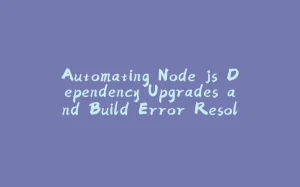
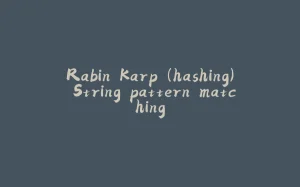


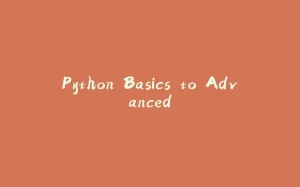
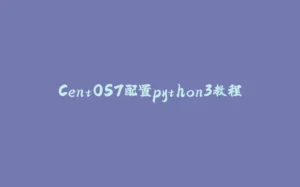


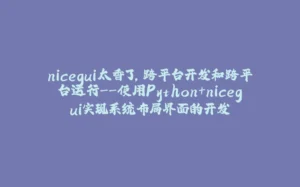
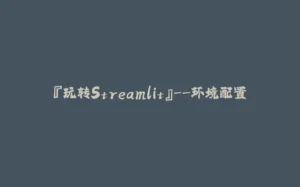
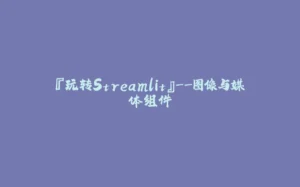


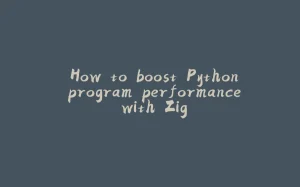

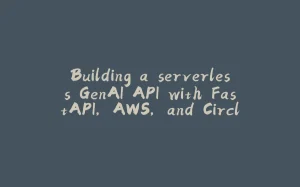




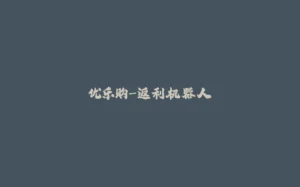

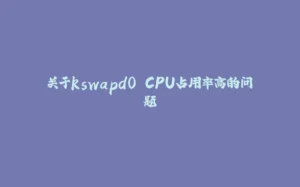
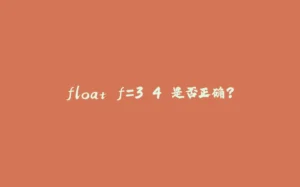


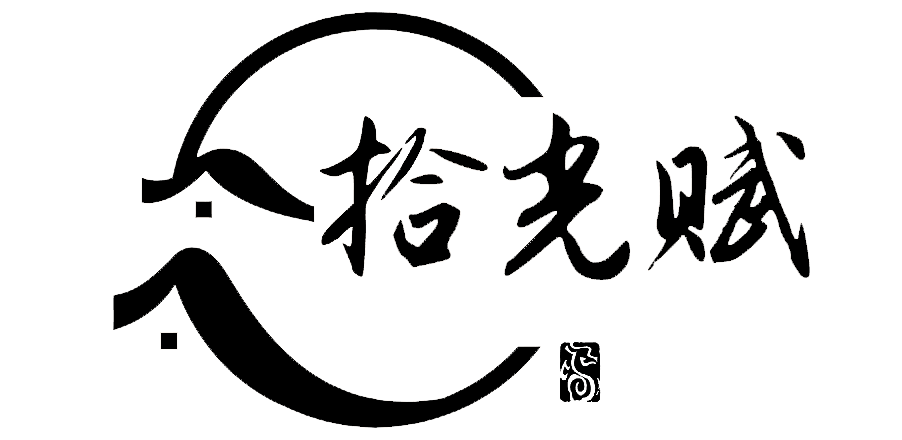


暂无评论内容